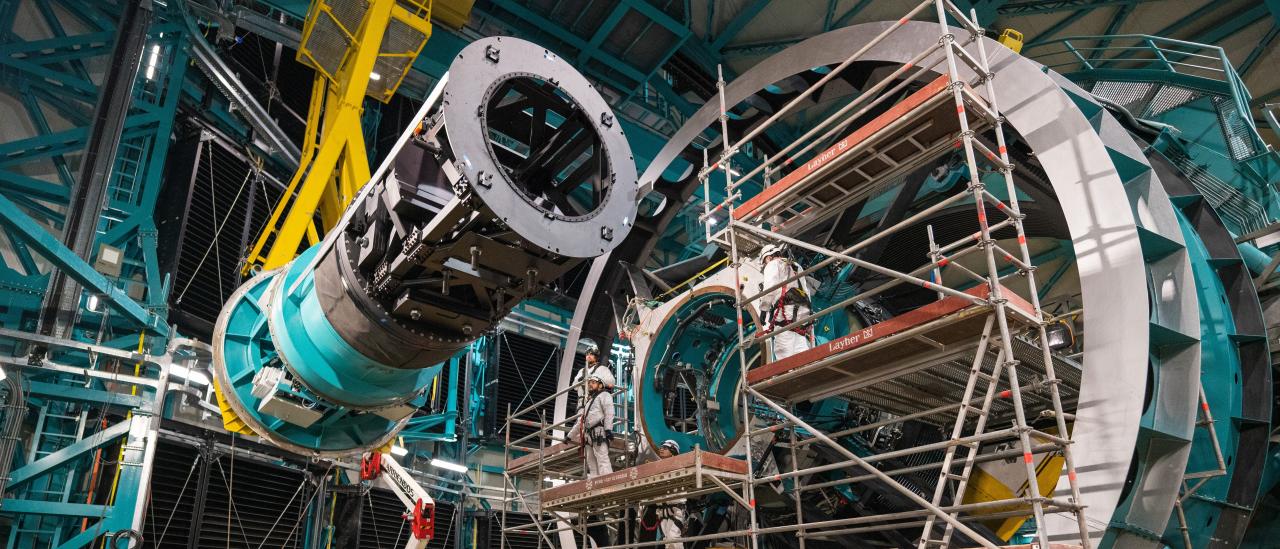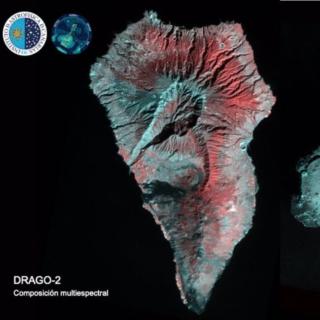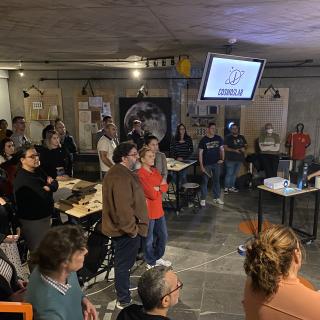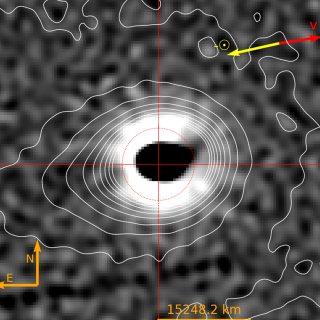During the week from 16th to 20th September the International Conference LSST@Europe 6 will be held in La Palma a meeting which will bring together some 140 researchers in astrophysics from more than 20 countries. At the meeting the latest advances in the LSST project, a front-lione initiative in the exploration of the Universe which will be carried out at the Vera Rubin Observatory in Chile and which has close collaboration from the Instituto de Astrofísica de Canarias (IAC).
The project consists in carrying out a new and detailed census of the sky, called the Legacy Survey of Space and Time (LSST). This will be carried out using a telescope with a primary mirror of 8.4 metres which is under construction in thenorth of Chile and which is planned to start observing during 2025. This telescope will be able to take an image of the whole availaboe sky in continuous scans with its wide field of visión.
The LSST will be taken with the largest digital camera in the world, as certified in the Guinness Book of Records, which has an imaging capacity of 3,200 megapixels. It is hoped that the camera will be able to take 200,000 photographs per year (which, without compression, is equivalent to 1.28 petabytes of data). These figures mean that this project will be one of the Big Data exercises with the biggest need fordata processing in the world, so that the use of modern informatic techniques, including artificial intelligence, is fundamental.
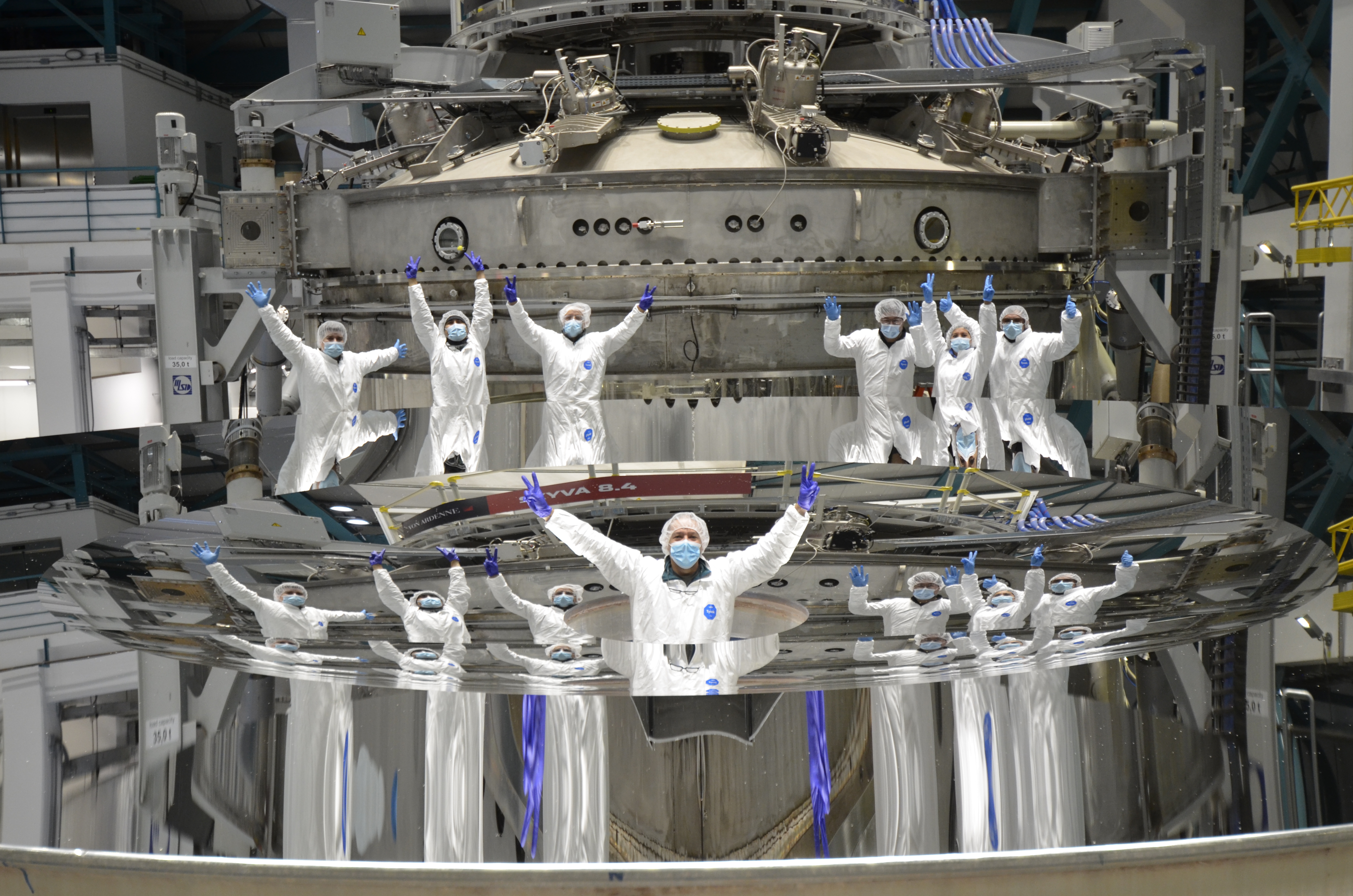
Johan Knapen a Research Professor at the IAC who is in charge of the participation of the IAC in the project explains that “from the IAC we have been plahing an important role in the LSST project for a decade and it is an ideal moment to welcome our international colleaguesand show them the recent advances at the IAC and the Observatorio del Roque de los Muchachos”.
Mireia Montes a researcher at the Institute of Space Sciences in Barcelona adds that “Rubin and LSST will show us a universe not known until now. In this meeting we aim to create a forum in which astronomers from all over th eworld acn share their scientific advances to prepare us for what Rubin promises to obtain”.
The Director of the IAC, Valentín Martínez Pillet, explains that: “As Director of an Observatory in the United States during the last ten years I have had the privilege of seeing how the Rubin Observatory is becomeing a reality and how its scientific phase is in preparation. Now, as director of the IAC, I am enthusiastic about the possibility that the IAC and the Gran Telescopio Canarias (GTC) may unite in the success which it will undoubtedly produce”.
“The combined efforts of scientists from all over the world will give the real impulse to the Rubin Observatory”, states Željko Ivezić a Professor at the University of Washington in the USA who is director of the build-up to the LSST. “By lowering the barriers of access to the data of the LSST and by encouraging everyone to participate we maimize the front-line science which will be carried out with the LSST”, adds Ivezić
During the meeting there will be lectures and new son the status of the telescope, the advances in the data management, and its potential impact on the range of fields in modern astronomy, such as cosmology, the structure and evolution of the galaxies and of the Milky Way in particular, in the physics of the stars and the interstellar medium and of asteroids and othe robjects in our Solar System.
La Palma in the vanguard of astronomy
The LSST@Europe 6 conference is being celebrated in La Palma taking advantage of the IAC’s Observatorio del Roque de los Muchachos (ORM) which is a world reference in astrophysical research and the role proposed from the IAC and from Spain which this 10.4 m telescope will play in the follow-up of the discoveries to be made as a result of LSST observations.
This event is in the framework of a series of meetings in Europe which aim at enhancing the scientific opportunties of the LSST project, and to emphasize the contributions coming from Europe. The choice of La Palma underlines its connections with global astronomy and the basic role that the Canary Observatories (OCAN) play in the international scene.
Tnose attending the conference will visit the Observatorio del Roque de los Muchachos to get to know its telescopes in person as well as the area affected by the Tajogaite volcano, where they will be given scientific explanations by personnel from INVOLCAN.
An outreach event
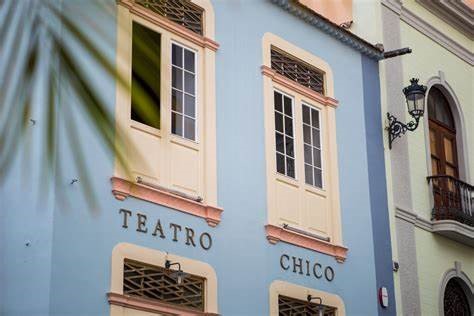 Within the programme of the International Conference LSST@Europe 6, on Tuesday 17th September there will take place an event, which will be open to the public at the Cine Chico Theatre in Santa Cruz de La Palma, with the title “Capturing the Cosmos from La Palma and Chile: Science and Discoveries” whose aim is to familiarize the inhabitants of La Palma with the science, stressing the key role of the observatories such as the Roque de los Muchachos, in the exploration of the Universe.
Within the programme of the International Conference LSST@Europe 6, on Tuesday 17th September there will take place an event, which will be open to the public at the Cine Chico Theatre in Santa Cruz de La Palma, with the title “Capturing the Cosmos from La Palma and Chile: Science and Discoveries” whose aim is to familiarize the inhabitants of La Palma with the science, stressing the key role of the observatories such as the Roque de los Muchachos, in the exploration of the Universe.
In this meeting, which will be free of charge and in Spanish, will participate three well known astronomers: Valentín Martínez Pillet, William O’Mullane and Laura Toribio San Cipriano.
Valentín Martínez Pillet is the Director of the Instituto de Astrofísica de Canarias (IAC) and he will give a talk titled “The Canaries and Hawaii, so distant and so similar”.
William O´Mullane is the Head of the Rubin Project in software, data managementand telescope control at the Vera Rubin Observatory, and will talk about “The Vera C.Rubin Observatory”.
Laura Toribio San Cipriano is a researcher in cosmology at the Centre for Research in Energy, Environment and Technology (CiEMAT its initials in Spanish), and her talk will have the title”Cosmology, the limits of the Unvierse”
After the presentations the public will have the opportunith to ask questions and to talk directly to these experts.
Contacto para entrevistas y más información: Verónica Martín, jefa de la UC3 del IAC (vmartin [at] iac.es y 658 39 42 49)
